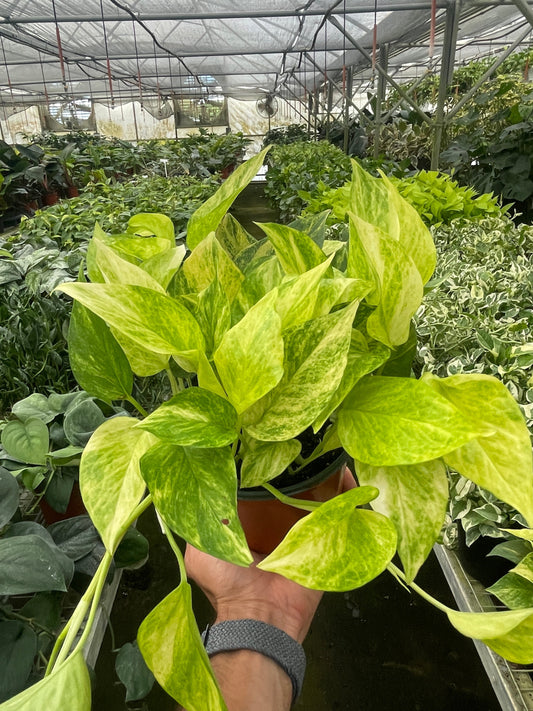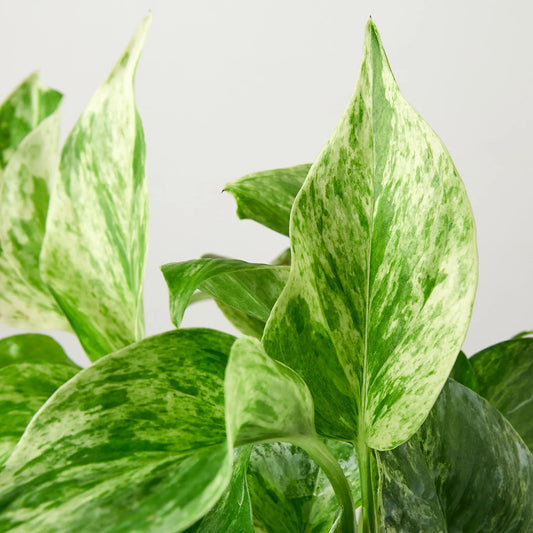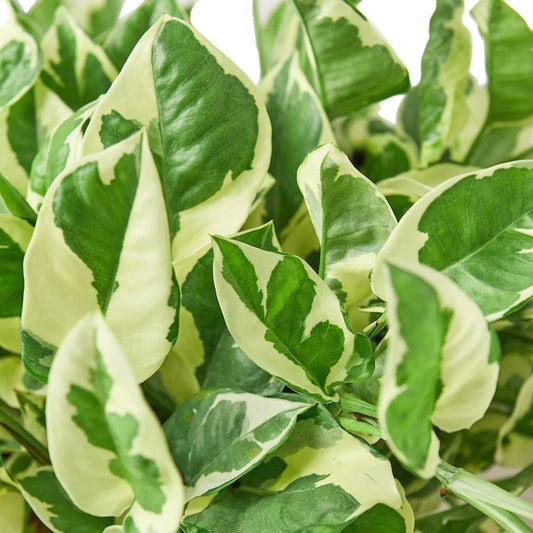Sago Palm Aerial Roots: Everything You Need to Know
Cafe Planta Team
Have you ever noticed those strange, knobby growths on your sago palm and wondered what on earth they are? If so, you're not alone. These curious formations, known as aerial roots, are a fascinating aspect of the sago palm, a plant that's been gracing our homes and gardens for quite some time. But what's the deal with these roots, and why do they appear?
This article will take you on a journey to understand everything you need to know about sago palm aerial roots. We'll discuss what they are, why they form, and how to care for your sago palm if you spot these unique features. So, grab a cup of your favorite beverage, and let's get started!
What Are Sago Palm Aerial Roots?
Sago palms, despite their name, aren't actually palms at all. They're part of the cycad family, which has been around since the age of dinosaurs. These ancient plants have some intriguing habits, one of which is the development of aerial roots. So, what exactly are these? Simply put, aerial roots are roots that grow above the ground. While most plants keep their root systems firmly underground, sago palms sometimes decide to put on a bit of a show by sprouting these structures.
These aerial roots can resemble little knobs or even small branches emerging from the base of the plant. For some, they might appear unsightly, but for others, they're a cool quirk of nature that adds character to their plant collection. These roots serve various purposes, such as supporting the plant, storing nutrients, or even helping with respiration. It's like your sago palm is saying, "I've got this covered!"
Understanding why your sago palm is growing these roots can help you determine if your plant is healthy or if it might need a bit of extra TLC. But more on that later.
Why Do Sago Palms Develop Aerial Roots?
Now that we've established what aerial roots are, you might be wondering why your sago palm bothers growing them in the first place. There are a few reasons these roots might pop up, and understanding them can give you some insights into your plant's needs.
One reason is environmental stress. If your sago palm isn't getting the nutrients or water it needs from the soil, it may decide to expand its root system to seek out alternative sources. This can be a sign that your plant is trying to adapt to its surroundings, much like we humans adapt to changes in our environment.
Another reason could be that your plant is maturing. As sago palms grow older, they often develop aerial roots as part of their natural growth process. It's like they're entering a new phase of life! These roots can help stabilize the plant, especially if it's growing in a container or a spot where its underground roots don't have much room to spread.
Lastly, it could simply be a genetic trait. Some sago palms are more predisposed to growing aerial roots than others, and it might not have anything to do with the care they're receiving. It's just one of those things that make your plant unique.
How to Care for Sago Palms with Aerial Roots
If you've noticed aerial roots on your sago palm, you might be wondering if you need to change your care routine. The good news is that in most cases, you don't need to do anything drastic. However, there are a few things to keep in mind to ensure your plant stays happy and healthy.
First, make sure your sago palm is getting enough water. While these plants are relatively drought-tolerant, they do appreciate a good soak now and then. If the soil feels dry to the touch, it's time to water. Just be careful not to overwater, as these plants don't like sitting in soggy soil.
Next, check the soil quality. Sago palms prefer well-draining soil that's rich in organic matter. If your plant is developing aerial roots due to poor soil conditions, it might be time to repot with a better mix. You can find specialized potting mixes for cycads at most garden centers, or you can make your own by mixing regular potting soil with sand or perlite for added drainage.
And don't forget about nutrition! Fertilizing your sago palm a couple of times a year with a balanced fertilizer can help provide the nutrients it needs to thrive. Just remember to follow the instructions on the package to avoid over-fertilizing, which can do more harm than good.
Should You Trim Sago Palm Aerial Roots?
One common question is whether or not you should trim those aerial roots. It's a bit of a personal preference, really. Some plant lovers enjoy the wild, natural look of these roots and choose to leave them be. Others prefer a tidier appearance and opt to trim them back.
If you decide to trim, make sure you use clean, sharp scissors or pruning shears to avoid damaging the plant. Trim them back to your desired length, being careful not to cut too close to the base of the plant. It's also a good idea to clean your tools with rubbing alcohol before and after pruning to prevent the spread of disease.
But remember, those roots are there for a reason, so if you don't mind their appearance, there's no harm in letting them be. They might just be adding a bit of stability or helping your plant breathe a little easier.
Potential Problems with Sago Palm Aerial Roots
While aerial roots themselves aren't usually a cause for concern, they can sometimes indicate underlying issues with your sago palm's environment. For instance, if your plant is developing aerial roots because it's not getting enough nutrients or water, you might notice other signs of stress, such as yellowing leaves or stunted growth.
In these cases, it's a good idea to reassess your care routine. Check that your plant is receiving adequate light, as sago palms prefer bright, indirect sunlight. If it's in a dark corner, consider moving it to a sunnier spot or supplementing with a grow light.
Another issue to watch out for is pests. Sago palms can be susceptible to mealybugs and scale insects, which can weaken the plant and cause it to produce aerial roots in response to stress. Regularly inspecting your plant for signs of infestation and treating promptly with an appropriate insecticide or natural remedy can help keep these pesky critters at bay.
Integrating Sago Palms into Your Home Design
Sago palms with their unique aerial roots can add an exotic touch to your home decor. These plants have a bold, architectural presence that can elevate the look of any room. But how do you incorporate them into your home design in a way that showcases their beauty?
One idea is to use them as a focal point. Placing a sago palm in a decorative pot and positioning it in a prominent spot can draw the eye and add a touch of greenery to your space. Consider pairing it with other tropical plants or using it as a standalone statement piece. The aerial roots can add an interesting texture and dimension, making your plant even more eye-catching.
For a more cohesive look, try coordinating your sago palm with your existing decor. Choose a pot that complements the color scheme and style of your room, or use decorative stones or moss to cover the soil and create a polished finish. The key is to let the plant's natural beauty shine while ensuring it harmonizes with your overall design.
Benefits of Having Sago Palms in Your Home
Beyond their aesthetic appeal, sago palms offer several benefits that make them a worthwhile addition to any home. For starters, they're relatively low-maintenance, making them an excellent choice for busy plant parents or those new to houseplant care. Their slow growth rate means they won't outgrow their space quickly, and they can thrive with minimal intervention.
Sago palms are also known for their air-purifying qualities. Like many houseplants, they can help remove toxins from the air and improve indoor air quality, creating a healthier living environment for you and your family. Plus, having plants around has been shown to reduce stress and boost mood, so your sago palm can contribute to a more relaxed and happy home.
And let's not forget the satisfaction of nurturing a living thing. Watching your sago palm grow and develop, including those quirky aerial roots, can be a rewarding experience that brings joy and a sense of accomplishment.
Common Misconceptions About Sago Palms
There are a few myths floating around about sago palms, and it's time to set the record straight. One common misconception is that these plants are extremely difficult to care for. While they do have specific needs, they're not as finicky as you might think. With a little attention to watering, light, and soil, sago palms can thrive in a variety of conditions.
Another myth is that aerial roots are a sign of poor plant health. While they can indicate environmental stress, they're not inherently bad. As we've discussed, they can serve several purposes and are often just a natural part of the plant's growth process. So, if your sago palm is sporting aerial roots, don't panic—it might just be doing its thing.
Finally, some people believe that sago palms are poisonous to touch. While it's true that all parts of the plant are toxic if ingested, simply touching the plant isn't harmful. Just be sure to wash your hands after handling it, especially if you have pets or small children around who might be tempted to take a nibble.
Final Thoughts
Sago palms with aerial roots are an intriguing and beautiful addition to any plant collection. Whether you're fascinated by their ancient lineage or simply love their unique appearance, these plants have a lot to offer. With a bit of care and attention, you can enjoy their quirky charm and the benefits they bring to your home.
At Cafe Planta, we're passionate about helping you care for your plants. Whether you're looking for advice on sago palms or searching for unique and beautiful houseplants, we’re here to help. Feel free to reach out to us via email or drop us a message on Instagram. We believe that plants have the power to connect us with nature and each other, and we're excited to be a part of your plant journey.



















